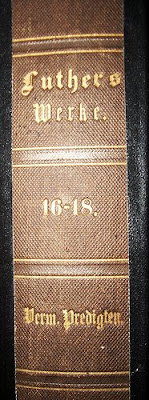 Today I bought The Jesus Family Tomb (Simcha Jacobovici and Charles Pellegrino, San Francisco: Harper San Francisco, 2007). As I sit here and thumb through it- I’m going to post some snippets.
Today I bought The Jesus Family Tomb (Simcha Jacobovici and Charles Pellegrino, San Francisco: Harper San Francisco, 2007). As I sit here and thumb through it- I’m going to post some snippets.Here are a few things from the introduction by James Cameron:
"As I write, it is Christmas Eve. The world is as torn by war as ever, and those wars are centered more in biblical lands than they have been for almost a millennium. A few months ago, the last part of our film production was delayed because Lebanese Katusha rockets were falling too close to our locations in Nazareth. Jesus's cry for compassion among men is as desperately needed a message today as it ever was. At Christmas we celebrate the birth of a man who called to the spark of goodness that exists within all of us, a man who gave the world hope two thousand years ago. His words, thoughts, and deeds have echoed down through the centuries undiminished. But who was this Jesus? Read on. You're about to meet him." P.xiv)
Spark of goodness? Is he kidding?
“Until now there has been zero physical evidence of his existence.” (p.viii).
Try applying this standard to the entirety of antiquity.
"Most of what we know, or think we know, comes from the four great Gospels of Matthew, Mark, Luke, and John. But what exactly are these Gospels? To the deeply and unquestioningly faithful, they are the direct and absolute word of God, recorded by the most saintly of men. Historians, however, now view them as composite works, each created by several authors and based in turn on oral traditions carried on for decades, possibly half a century, after Christ's actual ministry. There is no historical evidence that any of the authors, if in fact they were individuals, actually heard the words of Jesus from his own lips. Though I'm not a historian by training, I have loved history and archaeology since I was a child. But I grew up with the illusion that history, as it was taught to me, was sacrosanct, because it was all "written down somewhere." My first foray into a historical/archaeological investigation proved that notion wrong." (p.ix)
Which historians? Which several authors? which oral traditions?
"For my motion picture Titanic, I made a detailed study of that disaster, an event that took place merely a century ago, was described in detail by hundreds of eyewitnesses, and was immediately recorded by an already hypertrophied print media. Despite this, I found the testimony to be spotty and contradictory, and some witnesses clearly colored their testimony to fit personal or corporate agendas. As a result, huge gaps in our understanding of the event persist. The oceanographer Robert Ballard surprised historians by finding the Titanic broken into two pieces on the seafloor, despite an "official" history that had the ship sinking in one piece. Even after my thirty-three dives to the site and fifty hours of flying robot cameras through the interior, I still do not have a complete picture of what happened. As a result of this twelve-year investigation, I have come to realize that history is a consensus hallucination."
If history is a "consensus hallucination", why is Cameron's work not likewise the same?
"The Gospels as we know them today have been retranscribed and rewritten many times and translated from one language to another—from Aramaic to Greek to Coptic to Latin to various forms of English—with corresponding losses in nuanced meaning. They have been edited by Church fathers, centuries after the original words were spoken, to conform to their subsequent vision of orthodoxy. And yet, in the absence of the tiniest scrap of concrete physical evidence, they were our onlyrecord of the life and times of Jesus." (p.x)
So much for the science of textual criticism.
"Complicating matters are the other Gospels: the apocryphal texts such as the Gnostic Gospels of the Nag Hammadi Library found in the Egyptian desert in 1945. Buried in an earthen jar to keep them from the Christian orthodoxy of the fourth century, which sought to eradicate all the so-called heresies, these precious and astonishing books show the rich diversity of early Christian thought and give clues to the historical story not available in the Big Four of Matthew, Mark, Luke, and John. In the Gospel of Mary and the Acts of Philip, for example, Mary Magdalene is known as the "Apostle to the Apostles," an important teacher and partner in Jesus's ministry whom Jesus favored even over Simon Peter. She is described as Jesuss "companion," and she even kissed him on his "mouth" (the word many supply for what is a missing word in the Gospel), to the chagrin of the other disciples. What was this all about?" (p.x)
Acts of Philip- now there's a reliable source. Let's just pull out our 14th Century manuscript and do some good historical work.






2 comments:
Hi James,
Check this out:
http://www.michaelsheiser.com/M%20Heiser%20Ossuary.pdf
His response begins on page 3. It would appear that Cameron missed some of the actual research.
Yea I figured that book was as much a scam as anything. He made the mistake by saying the bible was traslated from greek to A, and from A to B, and from B to C... that is not the case though.
Each good translation is derived from original greek. They go from either Greek to English, Greek to Hebrew, Greek to Spanish, etc.
He made a mistake at that part...which I find fascinating =)
Post a Comment